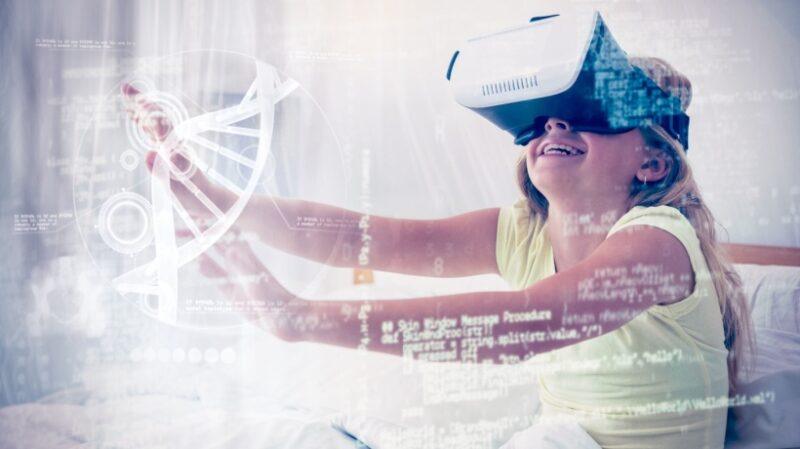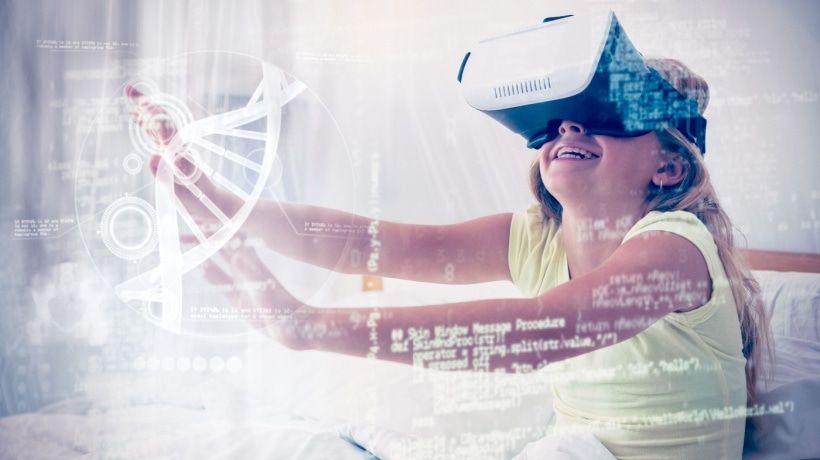
Virtual And Augmented Reality In eLearning: A Whole New World
Online learning no longer involves slideshows and video lectures. Today’s digital classrooms are all about experiences, because that’s what modern learners want. This is where Virtual Reality (VR) and Augmented Reality (AR) help in eLearning.
So, what exactly are VR and AR? Although they’re often mentioned together, they’re different from each other. Virtual Reality places learners in a completely digital world, typically using headsets. On the other hand, Augmented Reality adds digital layers to the real world through the phone’s camera or AR glasses. And the best part is that these technologies have real educational value. Studies have shown that learners who consume VR or AR learning content retain more information and stay more focused compared to those using traditional materials. Why? Because they’re actively involved in the learning process. They’re exploring, interacting, and making decisions in real time.
But the most exciting part is how these technologies can support personalized and hands-on learning. AR and VR can offer safe and engaging learning environments, whether it’s simulating a chemistry experiment without the risk, exploring ancient monuments virtually, or practicing public speaking in front of a virtual audience. Below, we’ll explore creative and innovative ways to use Virtual and Augmented Reality in eLearning, whether you’re a teacher, an Instructional Designer, or just interested in online education.
7 Creative And Practical Applications Of Virtual And Augmented Reality In eLearning
1. Virtual Field Trips
What if we told you it’s possible to sit on your couch and visit the pyramids of Giza, the Parthenon, or the British Museum? This is possible with virtual field trips in eLearning, all with the help of VR. Traditional field trips are not always possible. Budget limitations, geography, or other restrictions can make visiting certain places in real life challenging. However, with just a headset, you can take your learners to all kinds of places. For example, in a history lesson where students watch a video about the Colosseum, they can walk through it virtually as if they were there. This builds a deeper emotional connection and better memory retention. There are many user-friendly tools that can make this happen, like ClassVR or Discovery Education VR. Some even let educators guide their students through the trip in real-time, pausing to ask questions, share facts, or start a discussion.
2. AR Course Materials
Nowadays, instead of just reading about something, you can see it happening right on your screen in 3D, all thanks to Augmented Reality. These are called AR-enhanced course materials, and they involve using an app or device (usually a smartphone or tablet) to scan a piece of content, like an image, page, or object. Then it “comes alive” with digital elements such as animations, 3D models, videos, or even quizzes that appear over your page. This adds an interactive element, making lessons way more engaging. If you teach a biology class, with AR, your students can scan a diagram in their notes and see a 3D model of a beating heart, where they can zoom in, rotate it, and tap to learn more about each part. That’s not just cool—it’s memorable learning. AR tools like BlippAR and Adobe Aero let you design interactive layers with drag-and-drop features. Many of these platforms work on mobile devices, which your students use daily.
3. Simulations And Scenarios
Scenario-based learning is one of the most exciting and creative ways to use VR in eLearning. With it, you can step into a virtual world where you’re not just reading about a situation but in it. You can look around, interact, make decisions, and see the consequences of your choices in real time. In the case of healthcare training, a student could put on a VR headset and be transported into a hospital ER, faced with a patient experiencing symptoms. Without the real-life consequences, they’d need to identify the signs, choose the right actions, and respond quickly. The ability to practice high-pressure decisions in a safe environment is incredibly valuable, especially in fields where real-world mistakes can be costly or dangerous. Thankfully, platforms like Engage VR or Oculus Quest for Business are highly accessible, allowing educators to create highly realistic and relevant environments.
4. Games And Escape Rooms
Online learning can sometimes feel boring. However, VR and AR make it a little more like a game. This means students can go on an adventure, solve mysteries, and unlock new content from their phones or tablets. Specifically, AR gamification blends digital elements with the real world. Students can scan objects, find clues, and interact with 3D elements that appear right in their own space. It makes learning active and playful, and the competition keeps students engaged. For example, in a geography class, you can create an AR scavenger hunt across different continents. Students would explore landmarks and find clues about the population, climate, or culture. Even better? You can create an AR escape room. There, students must solve a series of puzzles to “escape” or reach the final goal. Plus, these aren’t expensive or hard to use. Platforms like Metaverse Studio let educators create interactive AR scenes and games without knowing code.
5. VR Avatars
Virtual Reality in eLearning can also help with personalization through virtual avatars and personalized learning environments. For instance, instead of logging into a Zoom class, students put on a VR headset and walk into a 3D classroom. An avatar version of their teacher greets them, and they sit in a virtual space surrounded by classmates, each represented by their avatars. This kind of personalization does wonders for learner motivation. Giving students the ability to design their own avatars and choose their hair color, clothing, and facial expressions gives them a sense of ownership and identity. Additionally, it makes things fair as everyone is represented equally, which can reduce social anxiety and encourage even the shyest people. Not to mention how beneficial this is for collaboration, since students can discuss projects, use interactive tools, and solve problems together.
6. AR Collaboration And Feedback
Feedback in online learning can sometimes feel impersonal. Learners submit a project, wait, and eventually get a response that may be unclear. However, feedback can be immediate with the help of AR. Students working on projects can use AR to show their work in a shared virtual space. Their instructor joins them in real time and leaves comments. This way, they see the feedback instantly, without having to guess what they did wrong. This kind of real-time collaboration and visual feedback is more meaningful and gives students a clear picture of what they need to improve or what works great.
7. VR For Well-Being
Online learning can sometimes feel isolating or even overwhelming. VR helps with that, too, promoting emotional well-being and mindfulness in eLearning. Students can use their headsets not only for learning but also as a break from it. When they feel tired, anxious, or overwhelmed, they can put on a VR headset and be in a forest, beach, or other peaceful setting. Platforms like TRIPP and MindLabs use VR to offer guided meditation, mental wellness routines, and stress relief. Teachers and trainers also use VR to simulate emotionally complex situations for learners so they can practice their empathy, emotional intelligence, and other soft skills.
Conclusion
You don’t need a big budget or a dedicated tech team to leverage Virtual and Augmented Reality in eLearning. Even simple things, like a short VR field trip, can transform students’ engagement with content. So why not give it a try? Embracing these technologies will make your class more curious, boost retention, and make your lessons ready for the future. The truth is that the future of learning is all about experiences, so use these immersive learning tools wisely to make the educational experience more personal, interactive, and unforgettable.

